For the 2025 school year, there is 1 public middle school serving 220 students in Hillsboro-Deering Cooperative School District. This district's average middle testing ranking is 1/10, which is in the bottom 50% of public middle schools in New Hampshire.
Public Middle School in Hillsboro-Deering Cooperative School District have an average math proficiency score of 12% (versus the New Hampshire public middle school average of 37%), and reading proficiency score of 25% (versus the 49% statewide average).
Minority enrollment is 5% of the student body (majority Hispanic), which is less than the New Hampshire public middle school average of 15% (majority Hispanic).
Overview
This School District
This State (NH)
# Schools
3 Schools
156 Schools
# Students
1,045 Students
47,559 Students
# Teachers
97 Teachers
4,474 Teachers
Student : Teacher Ratio
11:1
11:1
District Rank
Hillsboro-Deering Cooperative School District, which is ranked within the bottom 50% of all 189 school districts in New Hampshire (based off of combined math and reading proficiency testing data) for the 2021-2022 school year.
The school district's graduation rate of 75-79% has decreased from 85-89% over five school years.
Overall District Rank
#169 out of 189 school districts
(Bottom 50%)
(Bottom 50%)
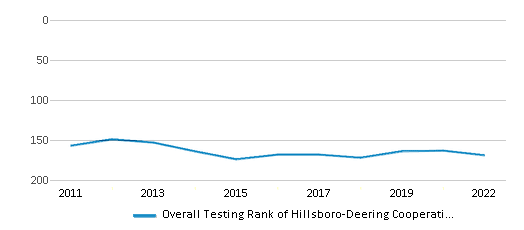
Math Test Scores (% Proficient)
27%
40%
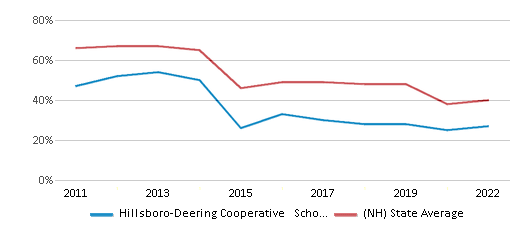
Reading/Language Arts Test Scores (% Proficient)
34%
51%

Science Test Scores (% Proficient)
20-24%
36%

Graduation Rate
75-79%
88%
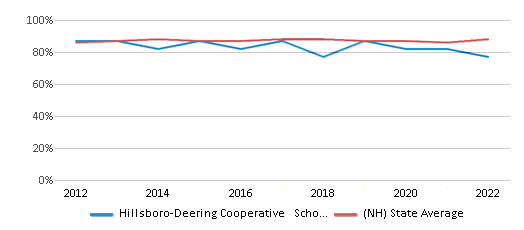
Students by Ethnicity:
Diversity Score
0.15
0.28
# American Indian Students
1 Student
75 Students
% American Indian Students
n/a
n/a
# Asian Students
2 Students
1,369 Students
% Asian Students
n/a
3%
# Hispanic Students
27 Students
2,819 Students
% Hispanic Students
3%
6%
# Black Students
9 Students
818 Students
% Black Students
1%
2%
# White Students
960 Students
40,294 Students
% White Students
92%
85%
# Hawaiian Students
n/a
34 Students
% Hawaiian Students
n/a
n/a
# Two or more races Students
46 Students
2,151 Students
% of Two or more races Students
4%
4%
Students by Grade:
# Students in PK Grade:
42
456
# Students in K Grade:
64
1,393
# Students in 1st Grade:
72
1,550
# Students in 2nd Grade:
64
1,543
# Students in 3rd Grade:
63
1,589
# Students in 4th Grade:
61
1,979
# Students in 5th Grade:
83
4,447
# Students in 6th Grade:
69
10,050
# Students in 7th Grade:
79
12,326
# Students in 8th Grade:
72
12,086
# Students in 9th Grade:
95
36
# Students in 10th Grade:
98
41
# Students in 11th Grade:
85
28
# Students in 12th Grade:
98
35
# Ungraded Students:
-
-
District Revenue and Spending
The revenue/student of $24,183 is higher than the state median of $22,075. The school district revenue/student has stayed relatively flat over four school years.
The school district's spending/student of $23,089 is higher than the state median of $21,293. The school district spending/student has stayed relatively flat over four school years.
Total Revenue
$25 MM
$3,646 MM
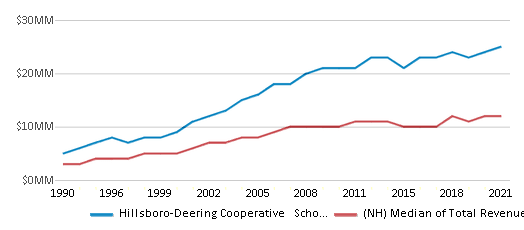
Spending
$24 MM
$3,517 MM
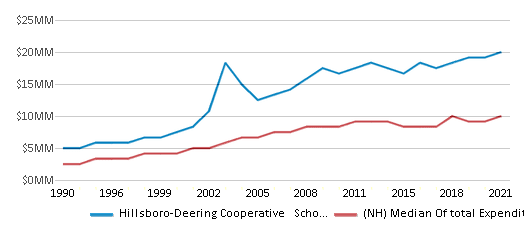
Revenue / Student
$24,183
$22,075
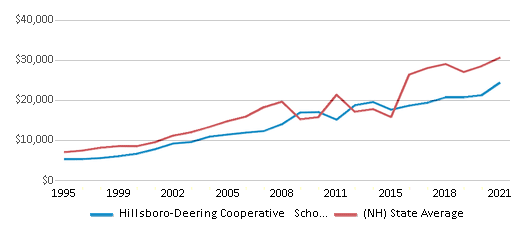
Spending / Student
$23,089
$21,293
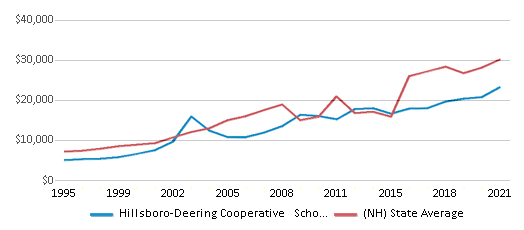
Best Hillsboro-Deering Cooperative School District Public Middle Schools (2025)
School
(Math and Reading Proficiency)
(Math and Reading Proficiency)
Location
Grades
Students
Rank: #11.
Hillsboro-deering Middle School
(Math: 12% | Reading: 25%)
Rank:
Rank:
1/
Bottom 50%10
6 Hillcat Dr.
Hillsborough, NH 03244
(603) 464-1120
Hillsborough, NH 03244
(603) 464-1120
Grades: 6-8
| 220 students
Recent Articles

Year-Round Or Traditional Schedule?
Which is more appropriate for your child? A year-round attendance schedule or traditional schedule? We look at the pros and cons.

Why You Should Encourage Your Child to Join a Sports Team
Participating in team sports has a great many benefits for children, there is no doubt. In this article you will learn what those benefits are.

White Students are Now the Minority in U.S. Public Schools
Increasing birth rates among immigrant families from Asia and Central and South America, combined with lower birth rates among white families, means that for the first time in history, public school students in the United States are majority-minority. This shift in demographics poses difficulties for schools as they work to accommodate children of varying language abilities and socio-economic backgrounds.





